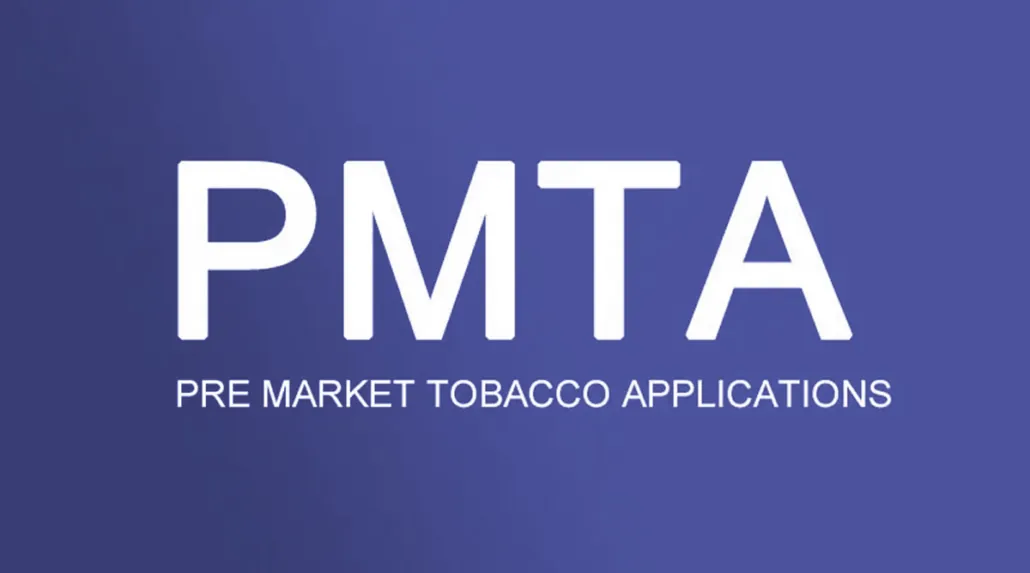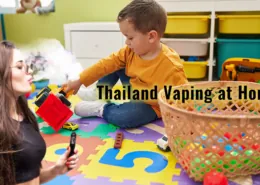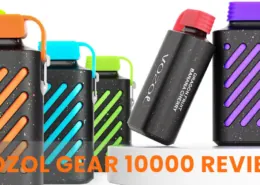FDA Vaping Regulations vs. Europe Vaping Regulations
The world of vaping has undergone significant changes in recent years, with both the United States Food and Drug Administration (FDA) and the European Union (EU) implementing new regulations that profoundly impact the industry. As a vape business owner or someone interested in the vaping industry, understanding these regulations and how they affect the products you sell and the businesses that produce them is crucial.
FDA’s Vaping Rules in the US
In the United States, the FDA has classified e-cigarettes and vaping products as “tobacco products,” subjecting them to the Family Smoking Prevention and Tobacco Control Act of 2009. This classification has created several challenges for the vaping industry:
The Arduous Pre-Market Tobacco Application Process
One of the most significant hurdles for vaping companies is the Pre-Market Tobacco Application (PMTA) process. Any vaping product introduced after February 15, 2007, must go through this costly and time-consuming procedure. The FDA estimates that each PMTA will cost over $1 million per product variation, including factors such as flavor and nicotine strength. This financial burden favors large tobacco companies with deep pockets, while small and medium-sized vape businesses struggle to keep up.
The PMTA process requires vape companies to provide extensive scientific data demonstrating that their products are “appropriate for the protection of public health.” This includes detailed information on the product’s components, ingredients, manufacturing process, and health risks. Companies must also provide data on how their product affects user behavior, including the likelihood of non-smokers starting to use the product and the potential for current smokers to switch to the vaping product.
Gathering this data is a monumental task that requires significant resources and expertise. Many small vape businesses simply do not have the means to conduct the necessary studies and compile the required documentation. As a result, the PMTA process has the potential to drastically reduce the variety of vaping products available on the market, limiting consumer choice and stifling innovation in the industry.

The Difficulty of Proving “Substantial Equivalence”
To avoid the PMTA process, vaping products can attempt to prove “substantial equivalence” to a pre-2007 product. However, this is easier said than done. The e-cigarettes available before 2007 were rudimentary and limited in functionality, making it nearly impossible for modern devices and e-liquids to claim equivalence.
Substantial equivalence requires the vape company to demonstrate that their product has the same characteristics as a pre-2007 product, or that any differences do not raise new questions of public health. This is a high bar to clear, as the FDA requires detailed information on the product’s design, composition, and manufacturing process. Even minor differences in ingredients or device functionality can disqualify a product from substantial equivalence.
The practical result of this regulatory hurdle is that the PMTA process forces most vape companies to go through it, as the substantial equivalence pathway effectively closes off to them. This further compounds the financial and logistical challenges facing the industry, particularly for smaller businesses.

The High Bar for Modified Risk Claims
Vape companies can also try to apply for “modified risk tobacco product” (MRTP) status, which would allow them to market their products as less harmful than traditional cigarettes. However, the evidence required for this designation is substantial. Swedish Match, a snus manufacturer, submitted over 100,000 pages of documentation and still faced opposition from the FDA.
To be granted MRTP status, a vape company must demonstrate that their product will significantly reduce harm and the risk of tobacco-related disease to individual users, and benefit the health of the population as a whole. This requires extensive scientific data, including long-term studies on the health effects of the product. The FDA also considers the product’s potential to introduce new users to nicotine, particularly youth, and the likelihood that existing tobacco users will switch to the product.
Given the relative novelty of vaping products and the lack of long-term health data, meeting these stringent requirements is a formidable challenge. To date, no vaping product has been granted MRTP status, and it remains to be seen whether any will be able to clear this high bar in the near future.

The EU’s Tobacco Products Directive
Across the Atlantic, the European Union has taken a different approach to vaping regulations with its Tobacco Products Directive (TPD). While the TPD doesn’t impose the same financial hurdles as the FDA’s rules, it still introduces several questionable restrictions:
- Vape companies must notify authorities of new products and provide detailed ingredient lists, emissions data, and toxicology reports.
- The TPD limits tank capacities to 2ml and e-liquid bottles to 10ml in volume.
- The maximum allowed nicotine strength is 20mg/ml.
- The TPD prohibits additives such as caffeine or vitamins in e-liquids.
- Vape companies can only use high-purity ingredients in e-liquids.
- Devices must deliver nicotine at consistent levels.
- All packaging must be leak-free and child-resistant, with mandatory warning labels.
- The TPD heavily restricts marketing and advertising.
While these regulations are not as severe as the FDA’s rules, they still place a significant burden on EU vape businesses. The limits on tank and bottle sizes, in particular, are difficult to justify and may lead to more frequent refills and a higher risk of spills.
The TPD’s restrictions on e-liquid ingredients and nicotine strength also limit consumer choice and may make it more difficult for heavy smokers to transition to vaping. The directive’s advertising restrictions further hamper the industry’s ability to reach adult smokers and communicate the potential benefits of switching to vaping.
Despite these challenges, the EU’s approach to vaping regulation is generally considered more balanced than the FDA’s. The notification and reporting requirements, while burdensome, are not as onerous as the PMTA process, and the product restrictions, while questionable, are not as limiting as the FDA’s de facto ban on most vaping products.
The Current of UK Vaping Laws
Currently, the UK continues to follow the TPD rules, which have been incorporated into domestic law through the Tobacco and Related Products Regulations 2016 (TRPR). However, the UK government now has the power to amend or repeal these regulations as it sees fit.
Given the UK’s relatively pro-vaping stance, there is potential for a more permissive approach to vaping regulations in the future. Public Health England, a government agency, has consistently maintained that vaping is at least 95% less harmful than smoking and has encouraged smokers to switch to e-cigarettes. This stance has led to a more supportive regulatory environment for vaping in the UK, with less restrictive advertising rules and a greater emphasis on the potential public health benefits of e-cigarettes.
As the UK continues to shape its post-Brexit relationship with the EU, it has the opportunity to diverge from the TPD and establish its own vaping regulations. This could involve a more permissive approach that prioritizes harm reduction and consumer choice, or a stricter regime that aligns with the EU’s TPD. The outcome will depend on a variety of factors, including political priorities, public opinion, and the influence of various stakeholders in the vaping industry and public health community.
Some European nations may decide to go beyond the TPD and impose additional restrictions, such as banning flavored vapes in an attempt to reduce their appeal to youth. However, current evidence suggests that this approach is unlikely to have the desired effect. The UK’s ultimate stance on vaping regulations post-Brexit remains to be seen, but there is potential for a more nuanced and evidence-based approach that balances public health concerns with the needs of adult smokers looking to switch to a less harmful alternative.

ECIGATOR
Ecigator is one of the well-known vape brands spun off from FM Technology Co., Ltd, it’s an ISO-certified disposable vape manufacturer for OEMs, ODMs, and OBM since 2010. The founder team comes from top firms with more than 10 years of experience in the vaping industry and has devoted thousands of hours to providing users with a better and better experience.
The Impact of FDA and EU Rules
While neither the FDA nor the EU have perfect vaping regulations, it’s clear that the US system is far more detrimental to the industry. The costly and time-consuming PMTA process threatens to wipe out countless small and medium-sized vape companies that simply cannot afford the application fees for each product variation.
The FDA’s regulations also create a significant barrier to innovation in the vaping industry. The PMTA process requires companies to submit extensive data on any new product, even if it represents only a minor improvement over existing offerings. This stifles the development of safer, more effective vaping products and limits consumer choice.
In contrast, while the EU’s TPD is flawed and overly restrictive in some areas, it still provides more room for vape businesses to operate. Most companies can realistically comply with the product testing and reporting requirements, and while the nicotine and container limits are frustrating, they are not insurmountable obstacles.
The EU’s approach also allows for greater innovation in the vaping industry, as companies can introduce new products without the prohibitive costs and regulatory hurdles associated with the PMTA process. This has led to a more diverse and competitive market in the EU, with a wider range of products available to consumers.
Navigating the Future of Vape Regulation
As the vaping industry continues to evolve, so too will the regulations that govern it. Both the FDA and EU rules stem from valid concerns about product safety and youth access, but they often overcorrect in ways that may ultimately harm adult smokers looking to switch to a less harmful alternative.
To find a better balance, stakeholders in the vaping industry, public health community, and regulatory agencies must work together to develop evidence-based policies that prioritize harm reduction and consumer safety. This will require ongoing research into the long-term health effects of vaping, as well as a willingness to adapt regulations as new data emerges.
One potential approach is to regulate vaping products based on their relative risk compared to traditional cigarettes. This could involve a tiered system, with lower-risk products subject to less stringent regulations than higher-risk ones. Such a system would incentivize the development of safer vaping products and provide consumers with clear information about the relative risks of different options.
Another important consideration is the role of flavors in vaping products. While some argue that flavored e-liquids appeal to youth and should be banned, others point out that flavors are an important tool for helping adult smokers switch to vaping. A more nuanced approach could involve restricting certain flavors that are particularly appealing to youth, while still allowing a range of options for adult consumers.
Ultimately, the goal of vaping regulation should be to maximize the potential public health benefits of e-cigarettes while minimizing their risks. This will require a delicate balancing act between protecting youth, supporting adult smokers, and ensuring the safety and quality of vaping products.
As the US, EU, and UK continue to navigate this complex regulatory landscape, all stakeholders must remain engaged and committed to finding workable solutions. Only by working together can we create a regulatory framework that supports innovation, protects public health, and ensures a vibrant and sustainable future for the vaping industry.
- Russia’s Vape Market: Inside the Battle for Control - August 8, 2025
- Brazil: Paraná Bill to Add Vaping to “No Smoking” Signs - August 8, 2025
- Celebrate with EightVape: 10 Lucky Winners Get Free Orders or $100 Gift Cards - August 8, 2025








